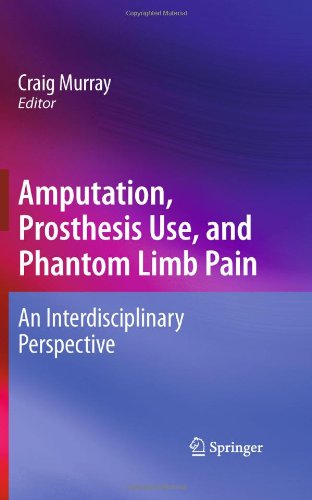مشاهده سبد خرید “Handbook of Cutaneous Melanoma: A Guide to Diagnosis and Treatment 2014” به سبد خرید شما اضافه شد.
Amputation, Prosthesis Use, and Phantom Limb Pain: An Interdisciplinary Perspective 2009
دانلود کتاب پزشکی قطع عضو، استفاده از پروتز و درد اندام فانتوم: دیدگاهی بین رشته ای
دسته: پرستاری, پزشکی, پزشکی بالینی, جراحی, طب فیزیکی و توانبخشی, عمومی
ناشر:
Springer New York
| نویسنده |
Craig Murray |
|---|
| تعداد صفحهها |
203 |
|---|---|
| نوع فایل |
|
| حجم |
8 Mb |
| سال انتشار |
2009 |
89,000 تومان
دانلود ۳۰.۰۰۰ کتاب پزشکی فقط با قیمت یک کتاب و ۹۹ هزار تومان !
توضیحات
هدف اصلی توانبخشی برای افراد پس از قطع عضو، بازیابی یا بهبود عملکرد آنها، از جمله بازگشت به کار است. اشتغال تمام وقت منجر به اثرات مفید سلامتی می شود و سالم بودن شانس اشتغال تمام وقت را افزایش می دهد (راس و میرووسکای 1995). استخدام افراد دارای معلولیت باعث افزایش عزت نفس آنها و کاهش انزوای اجتماعی می شود (Dougherty 1999). اهمیت بازگشت به کار برای افراد پس از قطع عضو باید در نظر گرفته شود. شاید اولین مقاله در مورد استخدام مجدد و مشکلاتی که افراد ممکن است پس از قطع عضو در محل کار با آن مواجه شوند در سال 1955 منتشر شد (Boynton 1955). در سال های بعد، مطالعات پراکنده ای در این زمینه انجام شده است. علاقه بیشتر و مطالعات بیشتر در مورد بازگشت به کار و مشکلاتی که افراد در محل کار پس از قطع عضو با آن مواجه می شوند در دهه 1990 به وجود آمد و در سال های اخیر ادامه یافته است (برگر و مارینک 2007). این مطالعات در کشورهای مختلف در هر پنج قاره انجام شد و بیشترین تعداد آنها در اروپا، به ویژه در هلند و بریتانیا انجام شد (Burger and Marinc?ek 2007). به دلیل عملکردهای متفاوت اندام تحتانی و فوقانی ما، افراد مبتلا به آمپوتاسیون اندام تحتانی دارای محدودیتهای فعالیت و محدودیتهای مشارکت متفاوتی نسبت به افراد دارای قطع عضو اندام فوقانی هستند. هر دوی آنها در رانندگی و حمل اشیا مشکل دارند. افرادی که دچار قطع عضو اندام تحتانی هستند در ایستادن، راه رفتن، دویدن، لگد زدن، چرخش و کوبیدن نیز مشکل دارند، در حالی که افراد دارای قطع عضو اندام فوقانی در گرفتن، بلند کردن، هل دادن، کشیدن، نوشتن، تایپ کردن و ضربه زدن نیز مشکل دارند (Giridhar et al. همکاران 2001).
توضیحات(انگلیسی)
The main objective in the rehabilitation of people following amputation is to restore or improve their functioning, which includes their return to work. Full-time employment leads to beneficial health effects and being healthy leads to increased chances of full-time employment (Ross and Mirowskay 1995). Employment of disabled people enhances their self-esteem and reduces social isolation (Dougherty 1999). The importance of returning to work for people following amputation the- fore has to be considered. Perhaps the first article about reemployment and problems people may have at work after amputation was published in 1955 (Boynton 1955). In later years, there have been sporadic studies on this topic. Greater interest and more studies about returning to work and problems people have at work following amputation arose in the 1990s and has continued in recent years (Burger and Marinc ?ek 2007). These studies were conducted in different countries on all the five continents, the greatest number being carried out in Europe, mainly in the Netherlands and the UK (Burger and Marinc ?ek 2007). Owing to the different functions of our lower and upper limbs, people with lower limb amputations have different activity limitations and participation restrictions compared to people with upper limb amputations. Both have problems with driving and carrying objects. People with lower limb amputations also have problems standing, walking, running, kicking, turning and stamping, whereas people with upper limb amputations have problems grasping, lifting, pushing, pulling, writing, typing, and pounding (Giridhar et al. 2001).




